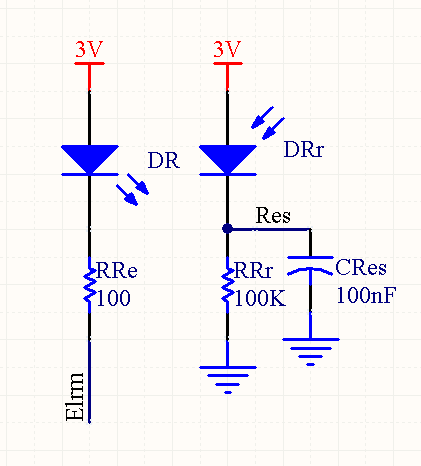(Posted May 3, 2020)
There are some thoracic or diaphragmatic respiration sensors on the market today, but these are very expensive, difficult to acquire and have a very limited lifespan, or are deteriorating and changing in response to the most commonly used respiration measurement. So I designed my first functional version of one that would correct those problems already mentioned, this is cheaper, the sensor electronics do not deteriorate over time or change response, and it is relatively simple
and since the complications of COVID-19 directly affect the respiratory system, it is precisely in respiration one of the places where you can study and analyze to know if a person is having or EVOLVING complications or symptoms related to COVID-19.This is due to the fact that when the patient's respiratory capacity is affected, the latter changes their respiratory rate and amplitude, and it is possible to know when these changes occur by continuously monitoring and comparing the respiration values (frequency, amplitude, inhalation, exhalation)
It is clear that to this sensor one can add one of temperature, heart rate and blood oxygenation, and thus a better way of detecting symptoms in the patient potentially related to the infection and diseases of COVID-19 is obtained.
but this project: Respiration Sensor 1, will deal directly with this simple respiration sensor (leaving for other previous projects its coupling with other devices)
Engineeringthe principle is to wear a belt that can detect the variation in the width of the thorac or abdomen when breathing (expanding or increasing in circumference on inhalation and contracting or decreasing its circumference during exhalation)
and this is achieved by making the belt of a non-stretchable material, with the exception of a small section of which if it is made of stretchable material (elastic textile spring) and since this is the only part that can be stretched, this section will reflect the expansion or linear contraction caused by breathing, and measured as a simple variation of linear distance
being the way I chose to measure this variation in distance with a simple infrared led, which emits its infrared light towards a semi-cylindrical white reflector, which is located within a few centimeters of the emitter, next to which is an infrared light phototransistor detector oriented towards the reflector, separated by the textile
spring (the only area of the belt where the variation in linear distance caused by the expansions and contractions of the breath is reflected) and what happens is that by varying that distance between the emitter-receiver and the reflector the intensity of infrared light that is reflected and is detected varies, varying the voltage output of the phototransistor
1 This sensor has an active filter to eliminate the interference of light external to that emitted by the infrared led, and which consists of the sensor taking 2 samples of the phototransistor:A: With the infrared LED on, so that the phototransistor captures the light reflected in the reflector from the infrared emitting LED + the natural light found in the environmentB: with the infrared led off, so that the phototransistor captures only natural light from the environmentand then what it does is a simple subtraction of the reading A - B = (Natural light from the environment + Light reflected in the reflector from the infrared led) - Natural light from the environment = Light reflected in the reflector from the infrared led
2 but for when the ambient light is so intense that it saturates the phototransistor you need: A shell somewhat shaped like a shell is required to protect the respiration sensor from sunlight (Infrared ray source) and other powerful infrared light sources that may affect measurement.
then the variable voltage output of the phototransistor is connected to an analog input of the stm32f429 Discovery card, where the response graph of the detected breath of the patient is processed and displayed on the LCD in real time
and as you can see in the gif above, by varying the distance between the IR emitter-reflector and the Reflector, the detected and displayed signal varies, generating in real time the waveform in response to contractions and expansions caused by breathing
Here as you can see in the gid above, the Belt Respiration Sensor 1 placed on the patient, is capable of detecting and graphing in real time the patient's breathing: amplitude, respiratory rate, inhalation, exhalation, and with this information it is can store, analyze, characterize, compare, detect evolutionary changes, and respiratory conditions that may be related to COVID-19
But this is not allI already have the next and best version of this respiration sensor, so soon:this story will continue!...
















Comments
Please log in or sign up to comment.